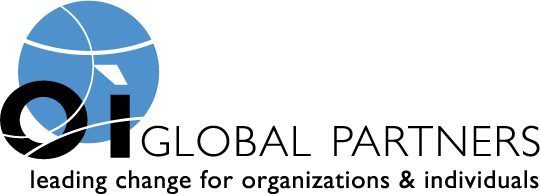“Why don’t you write a blog article discussing some of your ‘tidbits of knowledge’ that you talk about in your coaching sessions?” asked an outplacement client I recently coached. The client was referring to items I review with individuals not found in a workbook or handouts.
 I gave my client’s comment a lot of thought and in my thinking process, a 14th Century French proverb came to mind: Qui onques rien n’enprist riens n’achieva (He who never undertook anything never achieved anything).
I gave my client’s comment a lot of thought and in my thinking process, a 14th Century French proverb came to mind: Qui onques rien n’enprist riens n’achieva (He who never undertook anything never achieved anything).
So, taking the advice of my client, here are 9 tips for career transition you may want to use in your job-search efforts:
- Just as you need to have a well-written resume, you should have a robust LinkedIn profile. Head hunters and company recruiters are using LinkedIn as a tool to find qualified job seekers.
- Your resume does not need to be kept to one page. In my 20 years of coaching, I have read numerous professional articles indicating a one-page resume is better than a two-page resume and vice versa. The length of a resume depends on a person’s work experience, and it is now acceptable for a resume to be longer than two pages. I typically recommend about 390 words per page.
- Most of my new clients are not aware they need to put together an “elevator speech” which is sometimes called an “elevator pitch.” This is a concise, compelling introduction that can be communicated in the amount of time it takes someone to ride the elevator a few floors. This 30-second summary should include a job function, last or current company and a short description of what you do professionally.
- “References and further information are available upon request” is a sentence that no longer needs to be added to the bottom of your resume. It will not make your resume stand out and employers will ask you for your references even if the sentence is not on your resume.
- You need to create a LinkedIn headline that stands out by writing a “hook” showcasing your professionalism. I suggest you write the headline to let people know you are seeking a new job. You could start by saying “Finance Professional Seeking a New Opportunity.” However, to create an irresistible headline that establishes your expertise you could say “Proven ability to grow companies and drive shareholder value | seeking a new opportunity.” Keep in mind you have a 120-character limit.
- LinkedIn has a neat feature to find recruiters using the Advance Search Function. Go to the Title Field and type “recruiter” or “headhunter.” In the Industry Field click on “Staffing & Selection” or “Human Resources.” In the Relationship Field, you can minimize the number of recruiters by checking or unchecking the 1st 2nd or 3rd tiers. In the Keyword Field type an industry. Finally you can limit excessive results by adding items in the Company, Keywords and Location Fields.
- LinkedIn has recently updated a tool called LinkedIn Alumni. You can go to the Tool Bar and click on Interests, then Education. A less cumbersome way to access this feature is directly go to www.linkedIn.com/alumni to start. Across the top of the page there are three categories where you can find alumni in your three connections through Where They Live, Where They Work, and What They Do. You can also explore the alumni of other colleges and universities by searching under “Change school” in the top-right of the page.
- I always suggest to my clients a way to find job openings is using metasearch engines like Indeed. A metasearch engine is a search tool that sends user requests to several other search engines and/or databases and aggregates the results into a single list. Metasearch engines look pretty much the same up front, but their approach to presenting results varies widely so a job seeker needs to go to several to uncover different job openings. Some of the more popular sites are Glassdoor.com, SimplyHired.com, JobStar.org, AolJobs.com, Bright.com and JobDiagnosis.com.
- If you have ever wondered what are the most popular job boards people access, you can go to www.ebizmba.com to find the 15 Most Popular Job Sites. The data is a constantly updated average of each website’s Alexa Global Traffic Rank and the results are published month to month.
Finally, if you’re struggling, don’t go it alone. Get help. Contact OI Global Partners, and a compassionate outplacement professional would be happy to walk you through career transition.
You may also be interested in these posts: 8 Tips to Write a Resume Cover Letter, 7 Tips for Acing an Interview, 12 Useful Tips for Job Seekers and Buzzwords to Avoid on Your Resume.
Ray Blush has been managing partner of OI Partners – Hugh Anderson Associates in Ann Arbor, MI for 20 years. His prior background includes 25 years of top corporate, divisional, and plant-level general management and human resources experience in high-tech medical devices, machine tool and cutting tool industries. He holds an M.B.A. in Industrial Relations from the University of Detroit, and a B.A. from Xavier University. Holds a Certificate in Tool & Die from Macomb County Community College and has taught Small Business Management Continuing Education courses. He has served in leadership roles in several community service organizations. He can be reached at rblush@oipartners.net.
Share this post:

Comments are closed